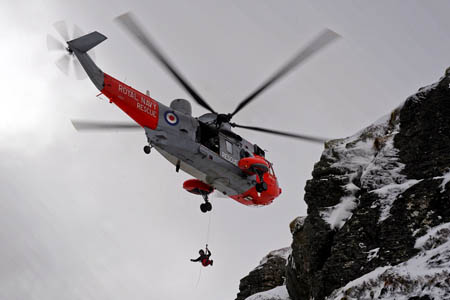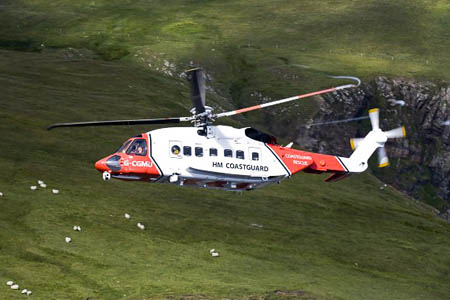New search and rescue helicopters in Scotland will have the most up-to-date equipment when they come into service in summer, the company operating them said.
Bristow, which won the contract to provide interim aircraft for the Coastguard, added that the four helicopters will be equipped with night-vision technology.
Two will be based at Sumburgh in Shetland and two at Stornoway on Lewis.
The Stornoway helicopters currently provide search and rescue support for mountain rescues in a large part of north-west Scotland, an arrangement that will continue under the ‘gap’ contract, which is expected to run until 2017.
Coastguard search and rescue helicopters are already run by a private company but in 2017 the Sea Kings operated by crews of the RAF and Royal Navy are also due to end their service as the whole search and rescue helicopter operation for the UK is privatised.
The Coastguard aircraft in Scotland will be Sikorsky S92 helicopters similar to the ones in use at present, but packed with new technology and enlarged fuel tanks to allow a greater range.
Bristow said it would allow unprecedented search and rescue capabilities.
The company said it had invested in the latest night vision goggle technology in order to give the crews the very best equipment to be able to operate safely.
The latest generation image intensifier tubes used in the goggles require an export license agreement with the US State Department.

Military helicopters such as this Royal Navy Sea King are due to end their service in four years' time
SAR commercial manager Simon Tye said: “Our new S92 search and rescue aircraft are the first type in Europe to be certified for night vision goggle technology.
“The technology is essential when responding to night-time incidents, particularly in northern Scotland where winter days are short and operations can extend into the hours of darkness.”
“Our new S92s have improved forward-looking infrared and thermal-imaging camera technology for more effective searches and high-illumination lighting to make winching easier and safer,” he said.
“This will be particularly useful when operating in confined spaces or conducting cliff rescues. The long-range fuel tanks will allow us to operate across the vast distances in Scotland we will be servicing.”
A wireless intercom system will allow winchmen to communicate not only with the aircraft but also with nearby vessels in the event that they are left behind at the scene.
A much improved external public address system will allow the SAR crew to communicate more clearly with causalities on the ground.
A medical zone intercom allows the cabin and cockpit to be split into isolated zones, meaning medical teams can work on a patient without the flight crew being distracted.
The helicopters will also have improved cabin lighting, including emergency white light, to enable advanced medical procedures to be carried out onboard. The cabins are fitted with 230V AC power outlets so that the SAR aircraft can operate advanced medical equipment onboard.
Bristow have designed a cabin layout to accommodate more casualties and medical equipment safely.
The Sumburgh craft are due to start operations on 1 June and the Stornoway helicopters on 1 July.
